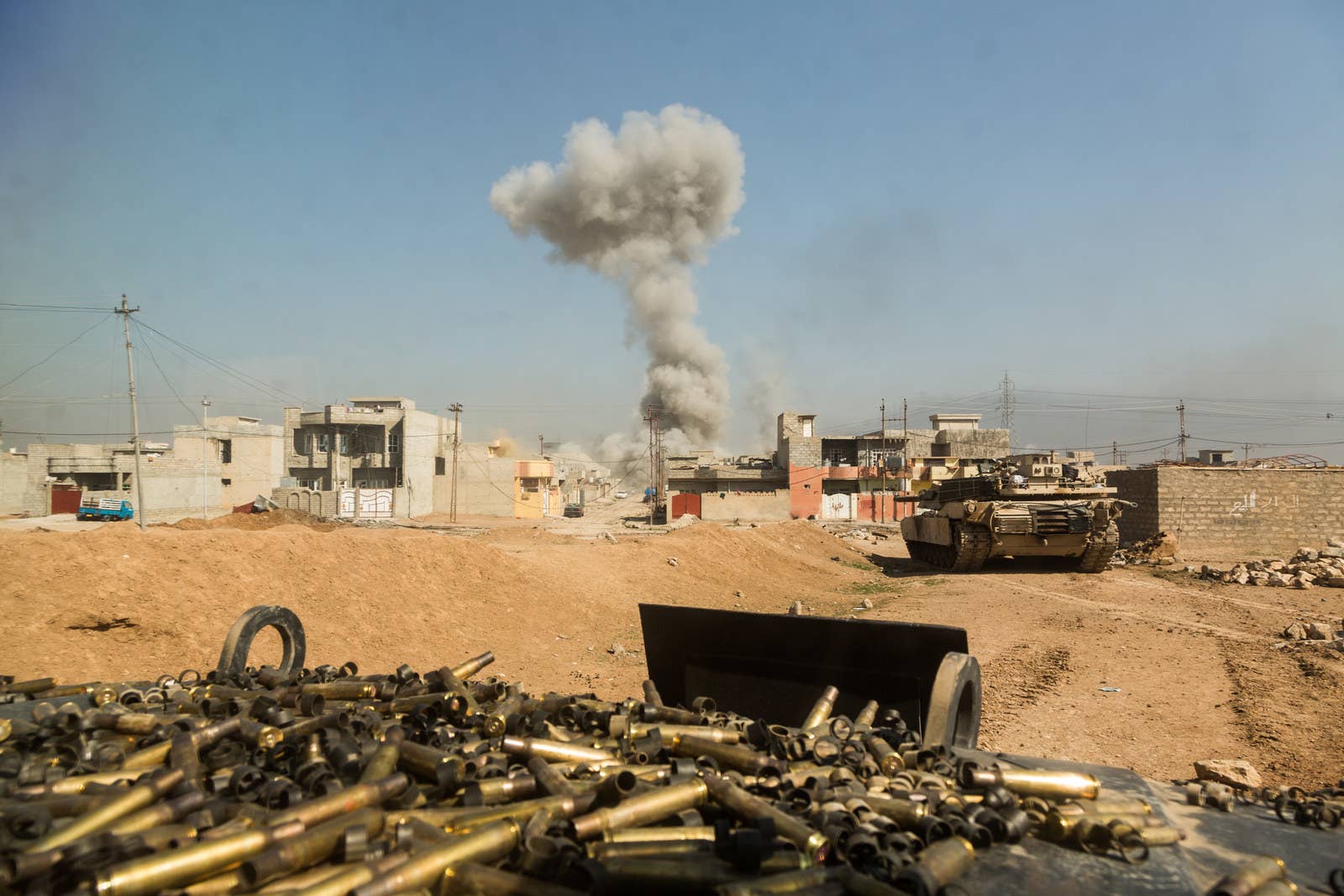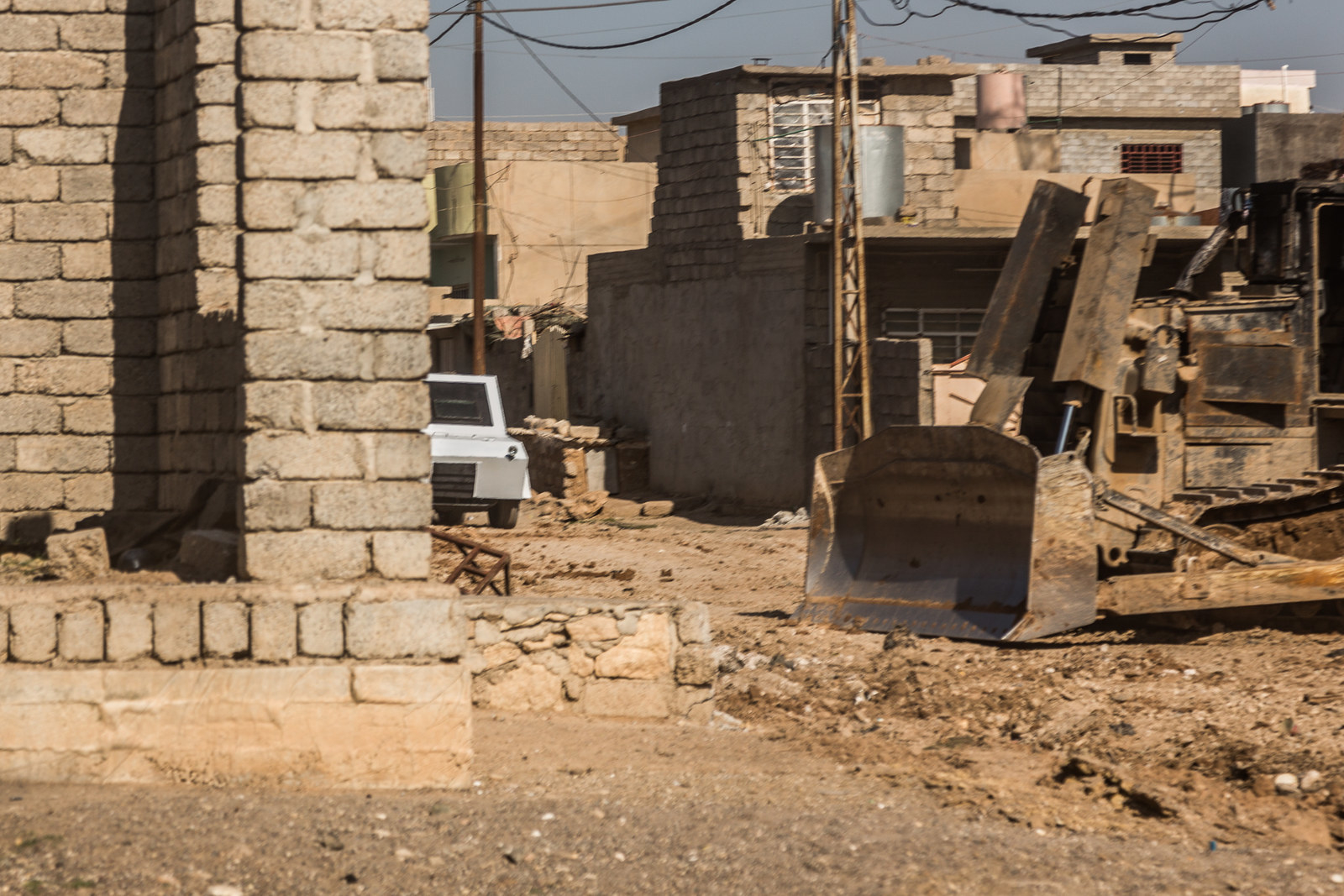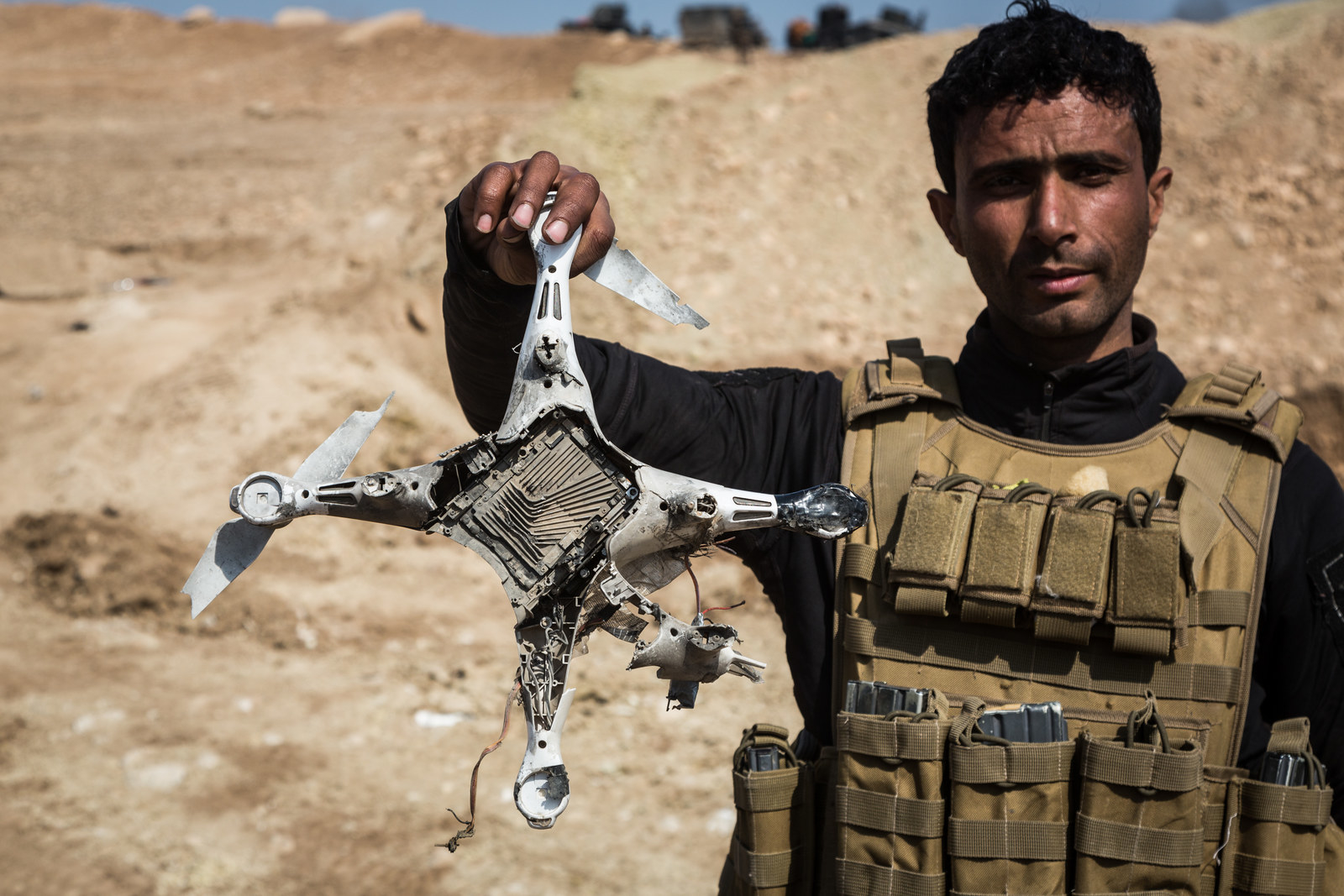
TEL AL-RAYAN, Iraq — Suicide bomb cars, mortar rounds, sniper fire, and armed drones prowling the skies — ISIS has turned western Mosul’s streets into a dystopian battlefield.
On a cold recent morning, the elite Iraqi soldiers advancing to retake ISIS’s key stronghold in Iraq were forced to fend off a vicious counterattack by ISIS militants that featured all of these weapons at once — the start of a hard day of fighting that put the enemy’s deadly and evolving tactics on full display.
ISIS deployed four car bombs in quick succession as its drone rained bombs onto the soldiers. A sniper’s bullet kicked up dust. A mortar blast wounded two soldiers, who were rushed away.
These changing tactics are inflicting a heavy toll on Iraqi soldiers as they advance across multiple fronts — and show how ISIS is trying to stay one step ahead of the US-led coalition striving to do the same. “They were watching how we work,” said Mustafa Bakr, a sergeant major with Iraqi special forces. “They know our weaknesses.”
Iraqi forces backed by US artillery and airstrikes have been waging a bloody offensive for Mosul since October, working to drive ISIS from the city where in June 2014 it had declared its caliphate. The Iraqis won control of the eastern half of the city — which is dissected by the Tigris River — in January, after suffering heavy casualties. But western Mosul promises to be an especially difficult fight. As Iraqi forces press deeper in, the area’s narrow streets will force them at times to leave the protection of their armored Humvees to clear houses on foot. The dense urban blocks will limit US airstrikes, as will the estimated 650,000 civilians still trapped there, which Iraqi officers say ISIS is exploiting both by blending in among them and using them as human shields.
With Mosul encircled and the road to Syria blocked by pro-government Shiite militia, the ISIS fighters hunkered down in western Mosul also have nowhere to run. “They are trapped, and they have no choice but to fight,” said Maj. Ali Taleb, who commands an Iraqi special forces battalion that has led the charge into Mosul’s west.

The morning attack Taleb and his soldiers faced was a preview for a difficult day of combat. After Iraqi special forces repelled ISIS’s attack, they began their assault in two columns of armored Humvees. One headed deeper into the center of Tel al-Rayan, a strategic village that ISIS had made into a defense line for western Mosul, while a second attacked the village’s southern flank. They met resistance immediately.
Bullets whizzed around the lead Humvee as ISIS fired from concealed positions on the seemingly abandoned streets ahead. Explosions shook it as ISIS fired mortars and rocket-propelled grenades. The machine gunner atop the Humvee returned fire.
Taleb, the battalion commander, had warned the previous night that in the early stages, at least, of the battle for western Mosul, ISIS was putting up a surprisingly determined defense: “They are fighting us face-to-face.”
There was a sudden eruption of smoke and fire about 100 yards away on the passenger’s side. ISIS had used an anti-tank missile to destroy the lead vehicle in the second convoy, killing all four soldiers inside. As smoke billowed from the charred vehicle, the Humvees near it backed up hurriedly. When a group of soldiers then ran up to retrieve the bodies, ISIS hit them with a mortar round, wounding at least one, who laid on the ground amid a cloud of dust, waving for help.
Eventually, the convoy paused its advance. The gunshots died down. Then the soldiers spotted something racing towards them on a sidestreet — a vehicle with a boxy shell of reinforced metal painted in a gleaming spaceship white.
Humvees raced to get out of the way before the car detonated. A violent shock wave jerked the Humvee’s passengers forward in their seats. The blast destroyed one bulldozer in the convoy, but the driver had escaped unharmed.

Shown a photo of the car bomb later, Iraqi officers recognized it as factory-made, perhaps coming from the makeshift production centers ISIS still runs in the western part of the city. “They build kind of Mad Max-style up-armor in order to stop or reduce [rocket-propelled grenade] fire or anti-tank weapons systems,” said Col. Arkan, an Iraqi special forces officer who calls in US-led airstrikes, and who asked that his last name be withheld for security reasons.
Arkan, who spends much of his time trying to destroy the car bombs with his strikes, said the photo showed how ISIS had made an alteration to its most important weapon: The bright white paint on the car was meant to look like a civilian vehicle to the US-led coalition’s pilots and drone operators. “It’s a new technique,” he said.
ISIS had also made deadly adaptations to its use of drones, Iraqi officers said. In the first days of the battle for western Mosul, they were being employed with newfound intensity, swarming Iraqi positions, disrupting operations, and inflicting casualties. The drones dropped more than 70 bombs on one sector alone in a span of just two days, commanders said. Arkan himself was wounded in the foot by shrapnel from one as he called in airstrikes. “I can’t command and control with all this chaos," he said. "Like, I can deal with the shooting. But with things dropping, it’s very difficult."

At least initially, he added, ISIS found ways to go around the coalition’s efforts to jam the drones, and the militants controlling them were getting smarter too. “They are not using a fixed location. It’s one shithead on a motorbike with a backpack,” he said. “And when he gets to a crowded area like downtown Mosul it’s kind of hard to hit him.”
The drones were used more frequently in eastern Mosul as the battle there progressed but reached a new peak in the early stages of the battle for the west. “They have learned to improve the drones. Even the grenades, they’re improving them. Now when they drop the grenades, they’re penetrating,” said Gen. Haider Fadhil of Iraqi special forces. “I can say it’s more effective.”
ISIS was also using drone video feeds to help coordinate its mortar and car bomb attacks, Fadhil said. He said this may have been the case with the car bomb that attacked the convoy, which was sent just after the four-man team manning the tank had briefly left the vehicle. “They’re watching everything. They know where to put a car bomb,” Fadhil said.
US and Iraqi commanders have said in recent days that they have adjusted to the drone issue as Iraqi forces push deeper into western Mosul — part of the constant need to adapt between the US-led coalition and ISIS. “By and large the Iraqis are countering it with their tactics,” said Col. Patrick Work, who commands the US Army’s 2nd Brigade, 82nd Airborne Division, which is on the ground in Iraq to assist Iraqi forces with the Mosul mission. “The Iraqis are continuing to advance, and they’re standing in the middle of the storm.”
Work said US troops, as they have throughout the offensive, are providing mortar and heavy artillery support to Iraqi forces in addition to US air support. Helping Iraqi commanders adjust on the fly to ISIS’s changing tactics, he added, is another key part of the mission. “We’re helping them see the enemy — not just what he’s doing but what he wants to do,” he said.
Maj. Gen. Joseph Martin, the top commander of US forces in Iraq, said Iraqi forces have made key adjustments in their strategy as the Mosul offensive reaches its last stages. “East Mosul was a tough fight with very complicated terrain and an enemy that prepared [to defend it] for a couple of years. It was defended by an enemy that was creative and reactive — but not good enough in the end,” he said, speaking by phone from Iraq. “We noticed some things that led us to the conclusion collaboratively that the enemy could not handle pressure from multiple directions, could not handle multiple dilemmas. So what you saw [after the reset] is synchronized ground maneuvers that overwhelmed the enemy and forced the enemy to react.”
He added: “We will continue to watch the enemy evolve, and where he adapts we will also adapt.”
